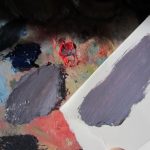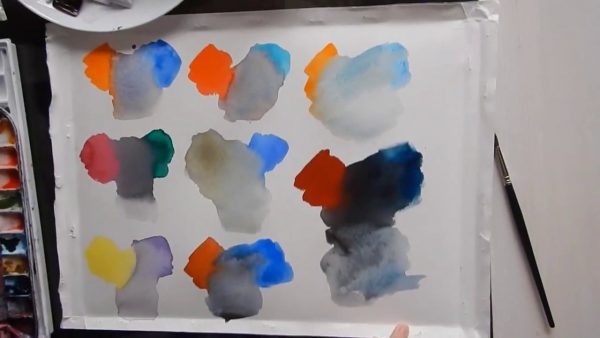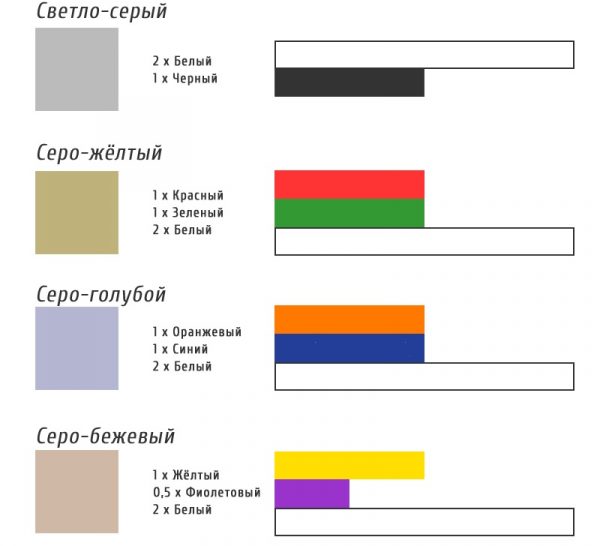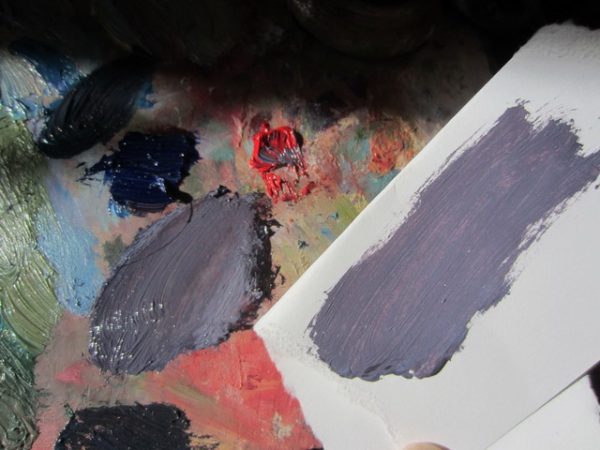Some people consider the gray tone to be boring, and yet it is very common in everyday life. This shade is present in the interior, clothing, it is used by artists, decorators. How to get a gray color when combining other colors? The question is very relevant, because there is no ashy in most standard sets of gouache, acrylic colors, watercolors, but it can be done at home.
The laws of color mixing
To get new tones when mixing paints, you need to familiarize yourself with the basic rules of color, which are invariably observed in construction, design, and painting. According to science, chromatic colors are distinguished - bright, colorful shades, as well as achromatic - gray, white, black.
The ash tint is unique in its own way. Any chromatic color has an additional tone, when combined with which gray is formed. This is the first law of color mixing. Other recommendations are as follows:
- when combining two primary colors that are closer in the circle than the additional ones, the new hue will be located in tone between them along the smaller arc of the circle;
- two colors when combined allow you to get a hue, which by chromaticity is always intermediate between the original;
- when two tones of equal chromaticity are mixed, the same color will be obtained regardless of the spectral composition of the original ones.
to contents ↑
How to make gray by mixing colors
Hairdressers using the highlighting technique are well aware of the possibility of obtaining an ashen color when combining white, black. Indeed, the easiest way to do it is to dilute a drop of black with a certain amount of white. In watercolor, gray can be made even simpler: dilute black paint with water. The less white the mass, the darker the gray.
The mouse tone can also be cold and warm. This is due to the second method of its creation - by mixing the opposite in value dyes. For example, gray is prepared by combining green and red, and since the latter is warm, the resulting color will also not give away cold. To give the ashy "frost" without yellowness, blue notes should be present in it. The addition of brown, red, and beige will help to “warm” the tone.
to contents ↑It is not recommended to mix paints of different types or different manufacturers. Indicators of brightness, density can vary greatly, which will affect the quality of the result. Any finished dye can be made lighter or darker by dropping a little white or black, respectively.
Color blending options for grayscale
The tone that results from combining white with black is considered classic. The finished color can be changed in this way:
- introduce a drop of blue or green, making it cold, pearly;
- add yellow or ocher to get warm ashen;
- make a duet of mouse and antimony to create a metallic shade;
- combine gray with pink to create a beautiful ash pink, dusted color.
If you enter red in black and white, there will be an interesting copper-gray tone. An unusual ashen is also prepared by combining yellow, white, and violet - this combination also ultimately gives an achromatic hue. When mixing watercolors, gray is obtained from a duet of blue and brown. The scope for imagination is quite rich, and many experiments in the end allow you to make the right shade for the artist!








